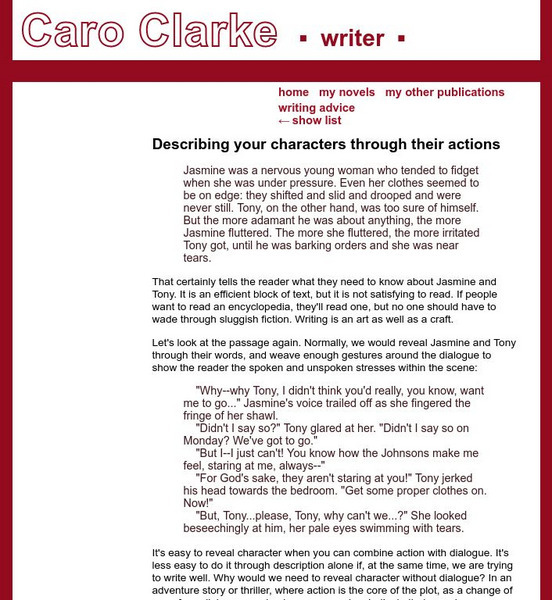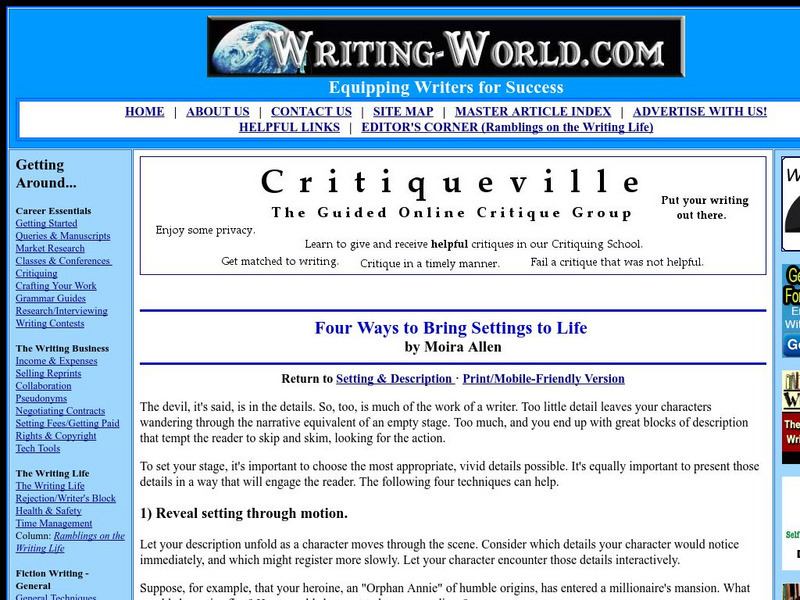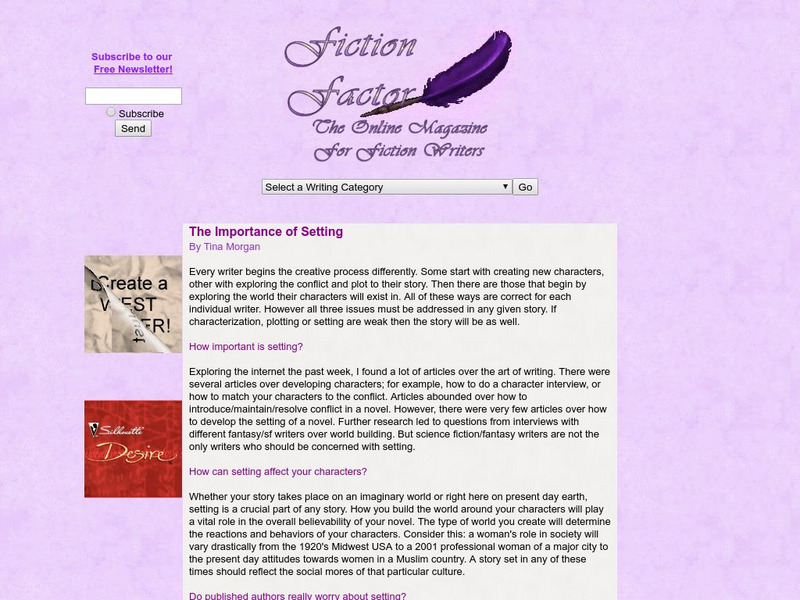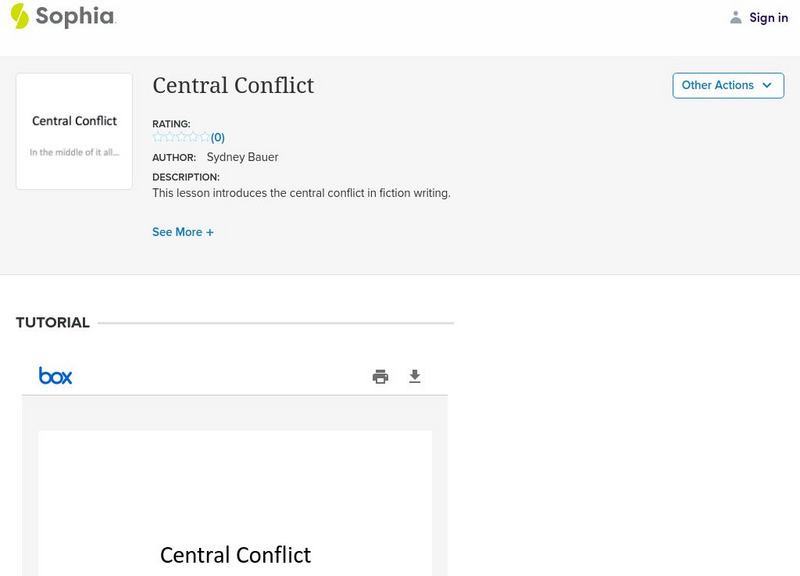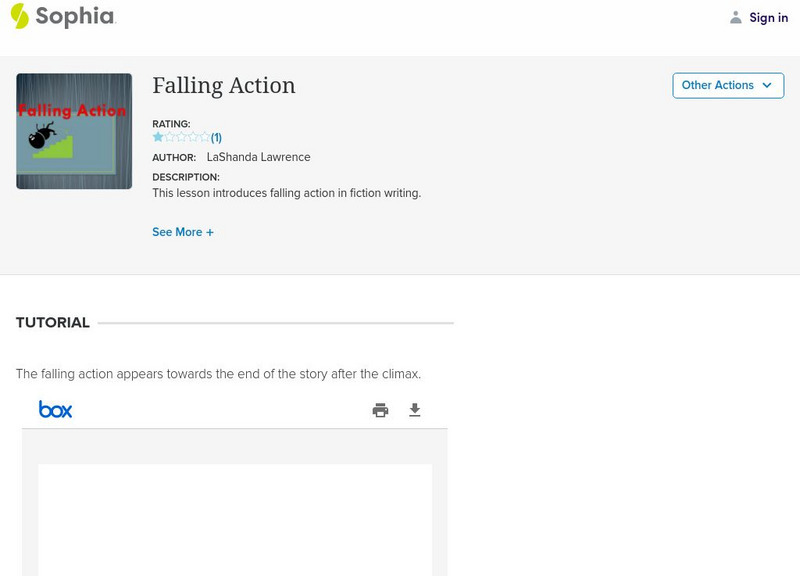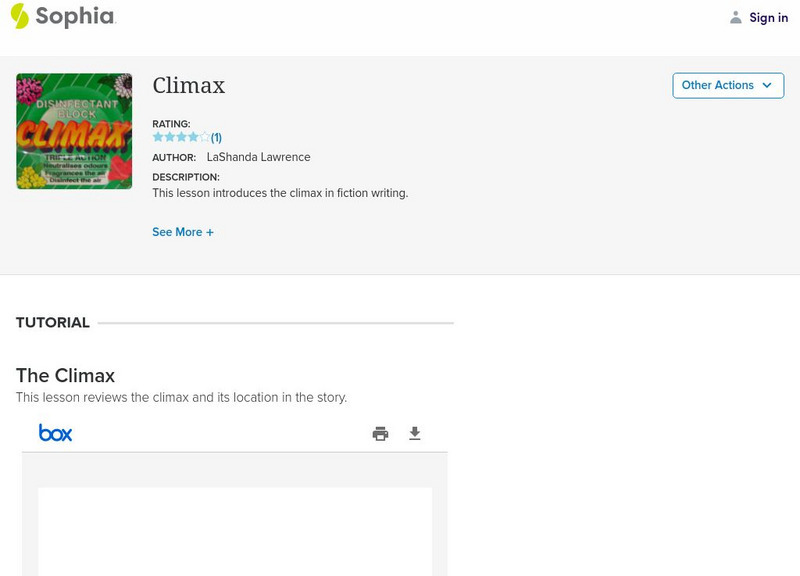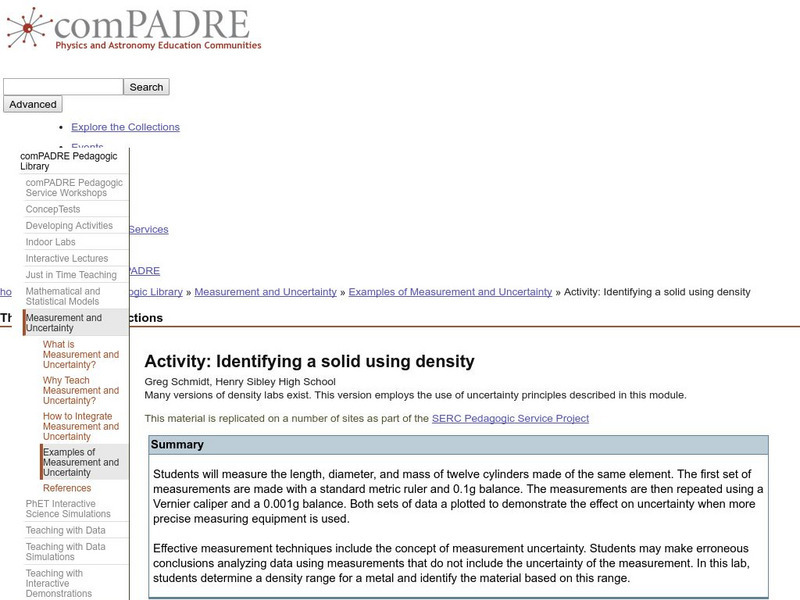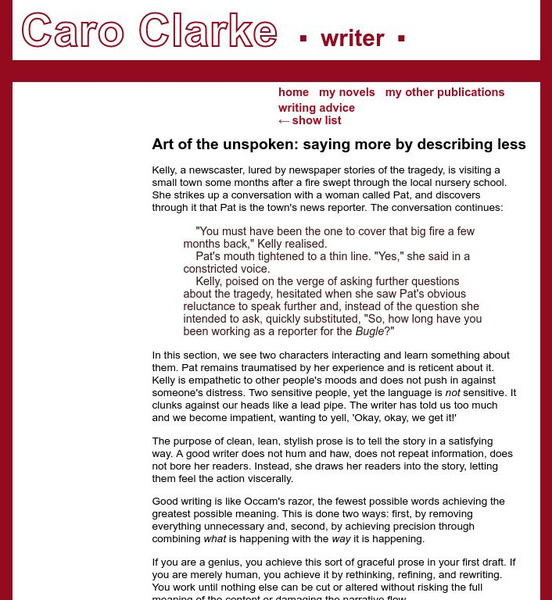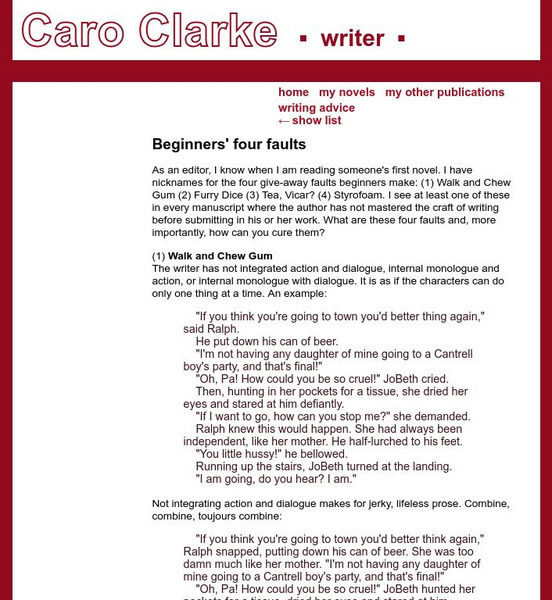Caro Clarke
Describing Your Characters Through Their Actions
This is the tenth in a series of articles designed to help the new novel author. This article focuses on how to develop characters through their actions instead of simply relying on dialogue and description of thoughts. W.11-12.3d...
Other
Writing World: Four Ways to Bring Settings to Life
A great resource outlining four major ways to make settings appear more real and genuine in fiction. Deals with themes such as motion, experience, mood, and the senses. W.11-12.3d Sensory/precise lang narratives
Other
Fiction Factor: The Importance of Setting
An interesting article concerning the importance of setting to any piece of fiction. Gives good information about how setting affects characters and "world-building."
TES Global
Blendspace: The Giver
This blendspace includes thirty-two spaces with content connected to Lois Lowry's dystopia novel, The Giver. Links include novel discussion questions, author interviews, and video tutorials to review literary topics.
Sophia Learning
Sophia: Central Conflict
An eight-slide document introducing central conflict in a literary text and providing examples from The Arabian Nights.
AdLit
Ad lit.org: Classroom Strategies: Story Maps
Story Maps are used for teaching students to work with story structure for better comprehension. This technique uses visual representations to help students organize important elements of a story. Students learn to summarize the main...
Bibliomania
Bibliomania: Shakespeare "Merchant of Venice"
This website provides the full text of Shakespeare's play, "The Merchant of Venice." The text, which is organized by scene, is accompanied by a brief introduction with an overview of the play's "Comic elements," and its plot and characters.
BBC
Bbc: Gcse Bitesize: "Dr Jekyll and Mr Hyde"
Analyze literature through the study of "Dr. Jekyll and Mr. Hyde" by Robert Louis Stevenson. Made specifically for students preparing to take the GCSE test, this site is beneficial to all students learning about Stevenson or the elements...
Science Education Resource Center at Carleton College
Serc: Activity: Identifying a Solid Using Density
Students will measure the length, diameter, and mass of twelve cylinders made of the same element. The first set of measurements are made with a standard metric ruler and 0.1g balance. The measurements are then repeated using a Vernier...
Universal Teacher
Moore's Teacher Resources: Mark Twain's Adventures of Tom Sawyer
A great site from the UK. Includes plot analysis, characters, thematic elements, and cultural analysis of the novel.
University of Virginia
University of Virgina: Structural Behavior and Design Approaches
From the Introduction to Structural Design web site. A page of well-written lecture notes on the various structural qualities of building materials. A comparison is made of the strength, stiffness, stability and ductility of materials,...
Other
The Aria Database
The searchable Aria Database features over 1,200 arias from 170 operas by 60 composers. It includes lyrics, translations, synopses of operas, and MIDI files.
Other
Write4 kids.com
This site provides a great deal of information on writing children's stories. Contains "Advice, instruction, insider tips, insight and inspiration."
Caro Clarke
Explaining Too Much: Why More Is Less
This is the eleventh article in a series that is designed to help the new novel author. This article focuses on how to eliminate needless information in your novel. The key is to not explain too much about the action.
Caro Clarke
The Art of the Unspoken: Saying More by Describing Less
This is the thirteenth article in a series that was developed to help the new novel author. This article focuses on how good descriptions aren't necessarily connected with a lot of words, good descriptions are clean and to the point.
Caro Clarke
Historical Fiction: Who Rules?
This is the fifteenth article in a series designed to help the new novel author. This article focuses on the genre of historical fiction and the role of the author. Is the author a researcher or a story-teller?
Caro Clarke
Caro Clarke: Description: What's It For?
This is the twelfth article in a series that is designed to help the new novel writer. This article focuses on how to effectively use descriptions in any writing.
Georgia State University
Georgia State University: Hyper Physics: Ionization Energies
A concise description of ionization energy, and a line graph that plots the ionization energies of the first 88 elements vs. the atomic numbers.
Other
Essays on the Craft of Dramatic Writing
This site, by the author of a workbook on the craft of writing, is filled with essays about many elements of dramatic writing, from the principles of storytelling, to plot development, to character development. There are also numerous...
TES Global
Blendspace: What Makes Stories Scary?
A learning module that includes fourteen links to websites, videos, and activities on writing scary stories. Lessons focus on vocabulary, plot and character development, elements of gothic stories, tone and mood, suspense, and more.
Caro Clarke
Caro Clarke: Writing Advice: Beginner's Four Faults
This site is a personal site from Caro Clarke. The third installment in this series looks at the four major mistakes made by beginning authors. The main idea of this article is that the author needs to be able to combine dialogue with...
Curated OER
Georgia State University Hyperphysics: Ionization Energies
A concise description of ionization energy, and a line graph that plots the ionization energies of the first 88 elements vs. the atomic numbers.
Other popular searches
- Elements of Plot
- Short Story Plot Elements
- Teaching Elements of Plot
- Elements of a Plot
- Structural Elements of Plot
- Story Elements Plot Chart
- 5 Elements of Plot
- Identify Plot Elements
- Parallel Plot Elements
- Elements of Plot Movie
- Elements of Plot Quiz
- The Elements of Plot
